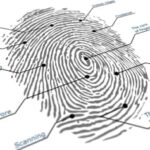Haut.AI, a company specializing in artificial intelligence for skincare, has developed a new age estimation method called HandAge, demonstrating that images of hands can potentially predict a person’s age nearly as accurately as images of their faces.

The discovery was detailed in a research paper published in the Experimental Dermatology Journal, titled “Predicting human chronological age via AI analysis of dorsal hand versus facial images: A study in a cohort of Indian females.” The study used two AI models, HandAge and FaceAge, to predict the age of 1,454 Indian women ranging from 20 to 80 years old from various cities, incorporating a broad spectrum of skin tones.
The findings revealed that the HandAge model, based on convolutional neural networks (CNN), achieved a high level of accuracy with an average prediction error of 4.7 years, closely following the FaceAge model’s 4.1 years. Both models showed a strong correlation with the actual ages of the participants. The study indicates that hand images can serve as a viable alternative to facial photos, especially in situations where the use of face images might be restricted or undesirable.
The study also highlighted the specific features that AI analyzes to estimate age. For the face, key indicators included areas prone to wrinkles and sagging such as around the eyes, nose, mouth, and forehead. For the hands, significant age indicators were wrinkles, knuckles, and bone prominence. These insights not only enhance our understanding of aging but also have practical implications for developing anti-aging treatments that target these specific features.
By focusing on a diverse dataset and employing hand images for age prediction, Haut.AI’s research could help to address potential biases in facial recognition systems, and could prove to be useful in protecting the privacy of individuals whose age needs to be verified. More broadly, it shows how AI is helping to enlarge the scope of what biometric technology has traditionally encompassed, illustrating that there are useful biometric signals everywhere, and not just in discrete areas like the face, iris, or fingerprint.
Sources: Science X, Cosmetics Business
–
May 7, 2024 – by Cass Kennedy







Follow Us